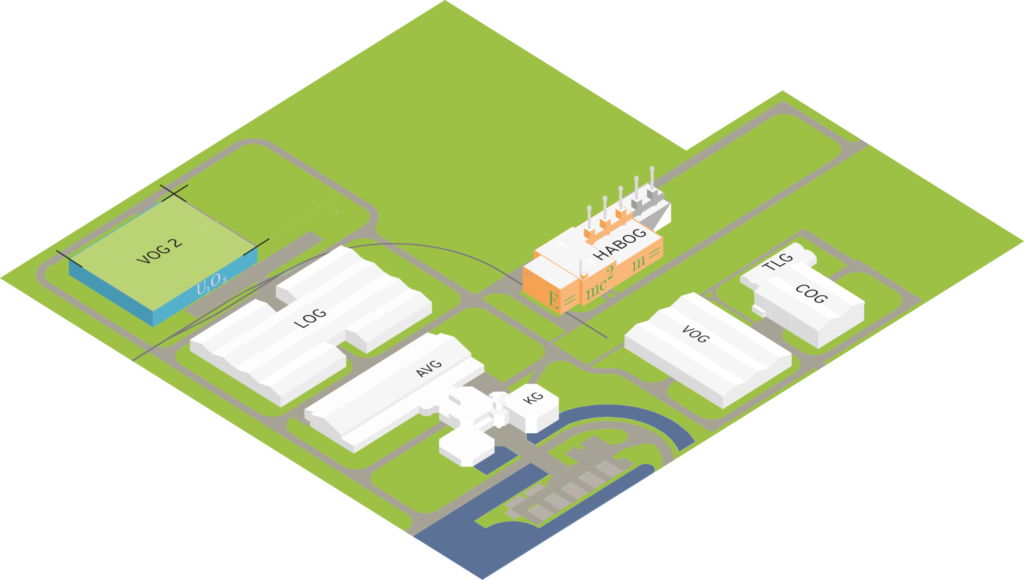Storage of low-level and intermediate-level waste
The four sheds of the LOG low-level and intermediate-level radioactive waste storage building are connected by a central reception hall. The lorry delivering the processed radioactive waste is emptied in this reception hall. Stacking the containers with the waste takes place using fork-lift trucks. Stacks are made with aisles between them to simplify the inspection of the waste. All the containers are numbered to enable the details on the waste to be checked in the administration if necessary. Additional new storage spaces will be built in the future. There is space on the grounds for twelve extra sheds.
The solid radioactive waste produced by the processing of ores is stored in the COG Container Storage Building. This waste does not first have to be encased in concrete, but can be directly stored in simple containers. Next to the COG, a shed has been built for the storage of depleted uranium. In this shed (the VOG), this material is stored in 3-cubic metre steel containers, without further conditioning. In 2017, the VOG-2 was put into use. This second storage building for depleted uranium is also a striking building on COVRA’s grounds. It’s bright blue with a few orange stripes, and 15-metre long stainless steels pipes sticking out of the roof edge on three corners of the building. These pipes make the VOG-2 the biggest sundial of Europe. This is a reference to the time factor, which ultimately renders radioactive waste harmless.

Storage of high-level radioactive waste
The High-Level Radioactive Waste Treatment and Storage Building [HABOG] is located in the middle of the grounds. The storage of high-level radioactive waste requires specific treatment. Due to the high radiation levels, this waste needs to be handled by using a remote control. The radiation is shielded by thick 1.70-metre concrete walls. The building has been made so strong that it is resistant to different exceptional outside influences like extreme tornados, gas cloud explosions, earthquakes and floods and aircraft accidents. In the HABOG, the waste is continuously monitored by means of measurements and checks. This guarantees that the waste is safely stored.